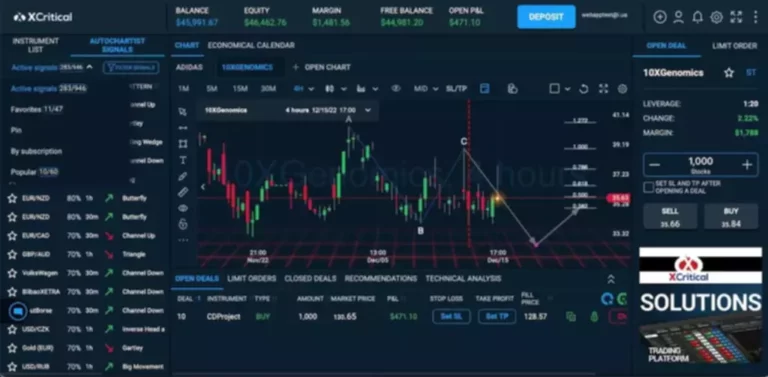Some could give attention to conservative investments such as bonds and blue-chip stocks, while others might tackle extra threat looking for larger returns. This knowledge might help you better perceive the dynamics of the market, make extra informed funding decisions, and navigate the complexities of the monetary business. They are responsible for identifying promising prospects, analyzing financial statements, assembly with company administration, and constructing financial models to forecast future performance. They then recommend to portfolio managers whether to buy, maintain, or promote specific securities.
Role Of Financial Advisors On The Sell-side
- Wealth managers help shoppers manage their wealth and obtain their monetary objectives by way of a comprehensive method to managing their financial affairs.
- Funding banking is a big source of profit for banks, and if an analyst makes a adverse recommendation, then the investment banking facet of the enterprise could lose that consumer.
- Sell-side traders are the people who work for banks and other monetary establishments that buy and sell securities.
- Always consult with a qualified financial advisor, accountant, or authorized professional earlier than making any significant monetary selections or investments.
- These entities are referred to as sell-side as a end result of their primary role is to create, promote, and sell securities to the buy-side.
- Buy-side traders are usually extra targeted on long-term objectives, whereas sell-side traders are extra focused on short-term targets.
Think About an asset management agency managing a fund that finances alternative power companies for its high-net-worth shoppers. The portfolio supervisor of the buy-side agency would actively consider alternatives to take a position these funds into probably the most promising businesses within the trade. One day, the vice chairman of equity sales at a quantity one funding financial institution or private fairness firm contacts the portfolio supervisor, informing them about an upcoming IPO by a outstanding various power firm. Intrigued by the prospect, the portfolio supervisor could spend cash on the corporate, thereby directing capital from the buy-side to the sell-side. The major role of the purchase facet in monetary markets is to handle and invest capital on behalf of purchasers or stakeholders. Buy aspect corporations, corresponding to asset managers and hedge funds, try to boost investment returns by creating and implementing strategic funding plans that align with their purchasers’ monetary objectives.
The #1 Online Course For Development Investing Interviews
In The Meantime, a buy-side analyst normally cannot afford to be incorrect typically, or no much less than not to a level that significantly affects the fund’s relative efficiency. DealRoom facilitates quite a few M&A transactions annually for organizations across both sectors. On a big account, the mission of many sell-side analysts is to sell the thought and strategy. Though the distinction between the sell-side and buy-side may be apparent on the floor, there’s nonetheless no strict borderline between either side Proof of personhood. Occasionally, sell-side analysts fail to revise their estimates, however their expectations do change. Financial news articles will check with a whisper quantity, which is an estimate that is different from the consensus estimate.
They are more doubtless to concentrate on the risks and pitfalls somewhat than an investment’s upside potential. To break into the buy-side trading world, it’s important to have a robust understanding of stocks and bonds as well as a strong instructional background in economics and finance. As a buy-side dealer, you will be liable for making funding choices for the firm, which might range from asset allocation to individual stock purchase or sale selections.
While the sell aspect regularly leverages advancements for improved market predictions and shopper engagement, the buy side may give consideration to integrating new data analytics instruments to refine funding methods. Buy facet firms make the most of their experience to optimize investment portfolios and meet particular financial objectives. Buy-side analysts can tackle the position of asset allocators, who are answerable for determining the optimum mix of asset classes inside investment portfolios.
Nevertheless, smaller companies usually concentrate on one space as a end result of fewer assets are concerned. Buy-side analysts are primarily concerned with making worthwhile funding recommendations for their very own funds. They have a vested curiosity within the performance of their investments and are sometimes compensated based mostly on the returns they generate. As a outcome, buy-side analysts are usually extra cautious and risk-averse than their sell-side counterparts.
As talked about above, companies that perform on the monetary markets because the “sell side” embody funding banks, broker-dealers, and market makers. Understanding these variations might help navigate career paths or leverage their insights successfully. A notable development in both purchase side and sell aspect buying and selling is the surge of algorithmic buying and selling.
When an investment banker helps an organization consumer do an IPO, they finally are serving to the consumer issue new equity securities. As part of the IPO service, the banker will find buy-side traders (e.g. pension funds, hedge funds, and so forth.) to buy the securities within the IPO transaction. Buy-Side Analysts Focus on creating detailed, long-term funding strategies for his or her firm’s portfolio. Their evaluation tends to be extra https://www.xcritical.in/ in-depth and proprietary, geared toward reaching high returns over time. Accuracy is important, as their agency directly acts on their recommendations, impacting the overall efficiency of the managed funds.
Buy-side corporations do not usually pay for or purchase the sell-side research outright however are sometimes not directly answerable for a sell-side analyst’s compensation. Often, the buy-side agency pays gentle dollars to the sell-side firm, which is a roundabout means of paying for the analysis. Soft dollars could be thought of as extra money paid when trades are made through the sell-side firms. This article will go through the responsibilities, strategies, and roles of buy-side vs. sell-side analysts.
Buy facet analysts work for investment corporations and manage funding portfolios on behalf of their shoppers, similar to hedge funds, mutual funds, and pension funds. Sell aspect analysts, then again, work for brokerage corporations and provide investment recommendations to shoppers. Buy-side analysts work for establishments that invest money on behalf of their purchasers, similar to mutual funds, pension funds, hedge funds, and insurance corporations. These analysts conduct in-depth analysis on securities, sectors, and markets to assist their employers make higher investment selections. Asset administration roles contain managing shoppers’ investments and offering them with traditional buyside liquidity and different investment merchandise individually or via a packaged product like a mutual fund.
They then create various marketing materials, together with detailed monetary statements and Excel reviews, distributing the information to potential traders on the buy-side. This course of completes the cycle of capital flow in financial markets, where the sell-side facilitates the issuance and distribution of securities to meet corporate financing wants. Wealth management roles contain offering monetary planning, investment management, and different financial services to high-net-worth people and households. Wealth managers assist shoppers manage their wealth and obtain their financial objectives by way of a comprehensive strategy to managing their monetary affairs.
By understanding every, you will achieve a clearer picture of how these analysts assist form the views of traders. Buy-side traders are sometimes compensated based mostly on the efficiency of their portfolio, while sell-side merchants are sometimes compensated based mostly on the commissions they generate. Perhaps the most important distinction is that buy-side traders are typically trying to buy securities, while sell-side traders are typically looking to sell them. This difference is necessary as a outcome of it implies that the goals of the two groups of traders are sometimes in conflict. One notable grey area is “traders,” who’re thought-about sell-side however they do actively participate in the market’s asset buying and promoting. However, it is smart when you consider that most sell-side traders are doing “market making,” which is ultimately a service for his or her buy-side shoppers who are sometimes on the opposite facet of trades.



